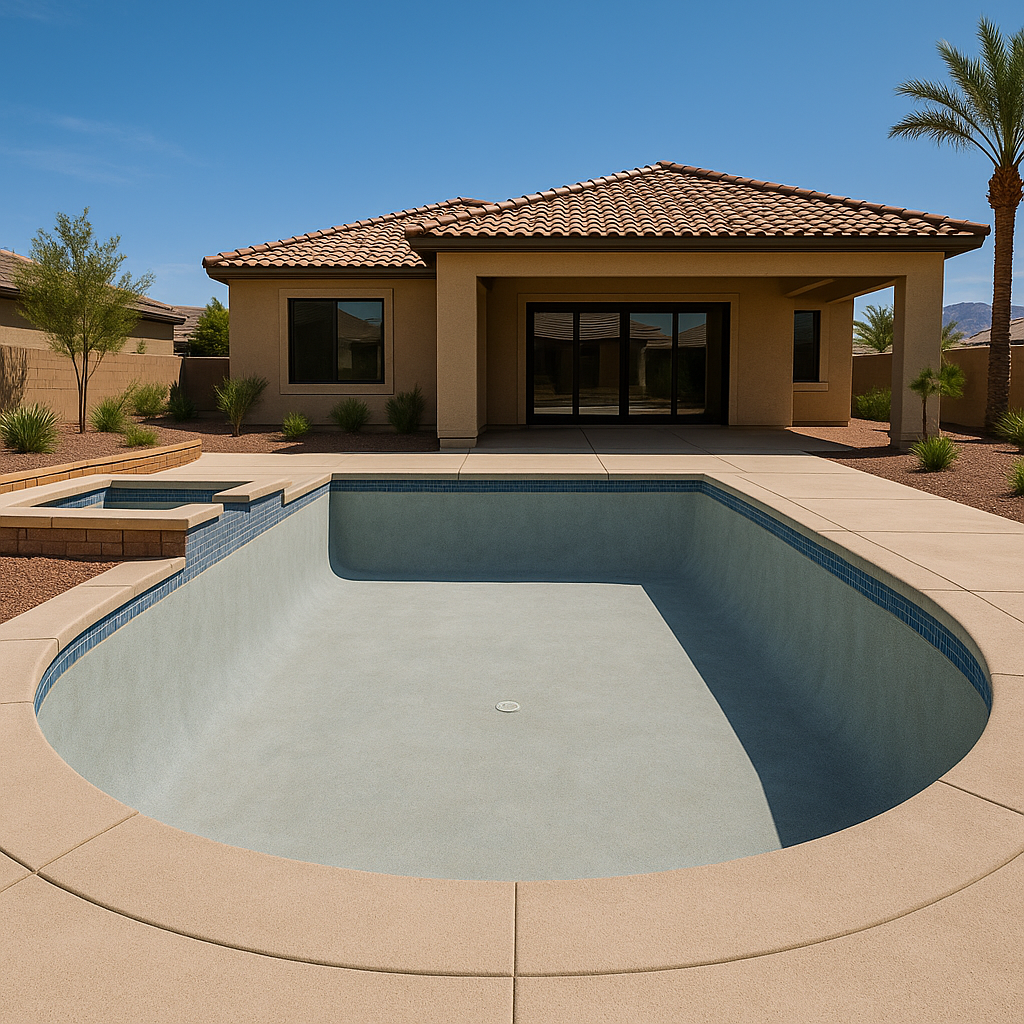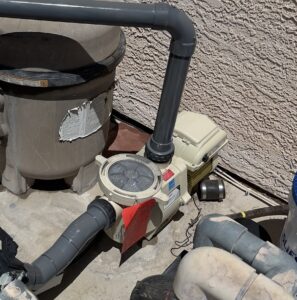Need to Drain your Pool?
Draining your pool might sound simple—pull the plug, let it empty, refill—but when it comes to inground swimming pools, especially in Las Vegas, it’s rarely that straightforward. Whether you’re dealing with murky water or preparing for a repair, understanding the why, how, and what-ifs of draining your pool can save you from costly mistakes.
Why Would a Pool Need to Be Drained?
There are a few legitimate reasons a homeowner might consider draining their pool:
• Excessive Total Dissolved Solids (TDS): Over time, your pool water accumulates minerals, salts, and contaminants that make water harder to balance and can dull finishes.
• Staining or Scale Build-up: Waterline marks, surface stains, or calcium scale often require aggressive cleaning—such as acid washing—that can only be done when the pool is empty.
• Structural Repairs or Resurfacing: Tile, plaster, or coping repairs may require an empty shell to complete the job properly.
• Algae Blooms: Severe algae infestations may reach a point where chemical treatment is no longer effective. In short, draining is sometimes necessary—but it should never be your first option.
The Hidden Risks of Draining a Pool
Here’s where many DIY efforts go wrong: draining a pool is not just about removing water. It carries significant risk, especially in desert environments like Las Vegas:
• Hydrostatic Pressure Damage: Even in dry areas, underground water pressure can build up. If not relieved properly, your empty pool shell could lift, crack, or shift—causing irreversible damage.
• Sun & Heat Exposure: In Clark County’s high-UV environment, exposed plaster or pebble finishes can blister, crack, or delaminate when left dry in peak sun.
• Pump or Plumbing Damage: Using the wrong equipment (or leaving it unattended) can burn out motors or flood surrounding areas
• Violating City Ordinances: Improper water discharge can earn you hefty fines and damage the stormwater system.
How the Pool Draining Process Works
While each situation may vary, here’s a simplified overview of how a pool is drained professionally:
1. Check Local Regulations: In Las Vegas, pool water must not be discharged into the street, storm drains, or neighboring properties. Approved discharge is typically through the sewer cleanout. Clark County and the Southern Nevada Water Authority provide specific guidance on this.
2. Turn Off All Systems: Power down pumps, heaters, and automation to prevent damage during the process.
3. Pump Setup: Use a submersible pump rated for pool use. The hose should connect to a home’s sewer cleanout—not the street—to comply with city code.
4. Monitor Carefully: Watch the water level and pump during the process. Never leave a pool draining unattended for long periods.
5. Surface Inspection & Work (if needed): Once empty, this is when cleaning or repair takes place—such as an acid wash or tile regrouting.
6. Refill & Balance: Once complete, the pool is refilled, the system is restarted, and chemistry is carefully rebalanced.
Is This a DIY Job?
In theory, yes. In practice? It’s risky and often not worth the potential damage.
That’s why most homeowners in Las Vegas leave this task to professionals with the right knowledge, insurance, and tools to do the job right.
Refer to the following numbers with questions on draining into storm drains due to septic tanks or other issues.
Las Vegas Valley Water District: 702-870-4194
Septic Providers:
North Las Vegas: 702-633-1484
Las Vegas: 702-229-7318
City of Henderson: 702-267-5900
City of Boulder City: 702-293-9200
Big Bend Water District: 702-298-3113
Need a Pool Drained the Right Way?
At Nearby Pool Service, we’ve drained and refilled hundreds of pools across the Las Vegas Valley. We ensure everything is handled safely, in compliance with Clark County regulations, and with your pool’s long-term health in mind.
If you’re considering a pool draining service, give us a call or send a message. We’ll help you decide if it’s the right step—and make sure it’s done properly from start to finish.




